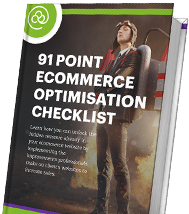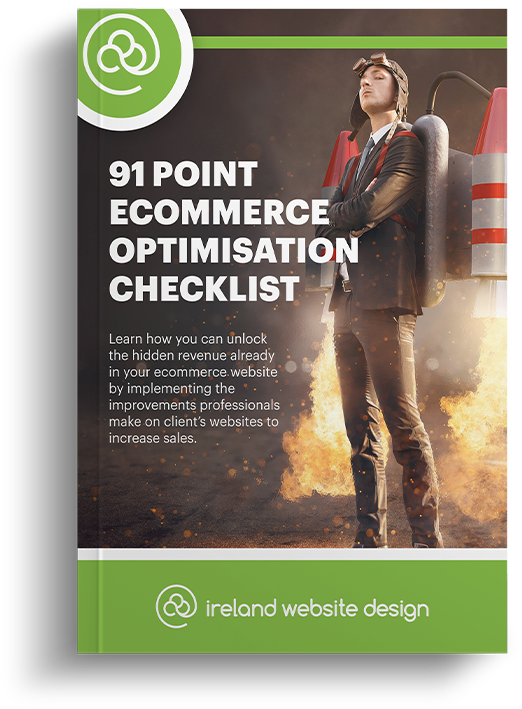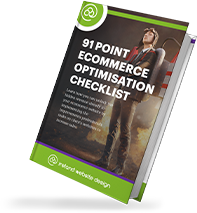There are lots of moving parts involved in running an eCommerce store. Between managing inventory, delivering excellent customer service, and maintaining your website, you’ve got a lot on your plate.
When you shift your attention towards broadening the reach of your eCommerce business online, it opens up a whole other can of digital marketing worms you simply don’t have time to get to grips with!
Want to make it easier for people to discover your eCommerce website naturally? Ready to grow your online business by expanding your reach? Then you’re in the right place.
Our SEO guide is designed to demystify search engine optimization for everyone, so you don’t have to enrol in a digital marketing degree just to get your business noticed online.
Dive into our top 12 SEO tips for eCommerce businesses, and start climbing the ranks on Google, expanding your customer base, and reaching the heights you know you’re capable of.
12 pro tips to rank higher on search engines
75% of internet users don’t scroll past the first page of Google search results when looking for products and services online. So, as you can imagine, search engine results pages are a highly competitive space for any eCommerce business trying to get to the top.
Incorporate the following SEO tips and techniques into your marketing strategy so you can measure up to even your biggest competitors in the search rankings in no time!
1. Ensure lightning-fast loading speeds
Your online visitors expect your website to load fast and function smoothly, and guess what? So does Google.
Google rewards fast-loading websites by placing them higher in search results. So, speed is key for your eCommerce site if you want to improve your search ranking!
One of the biggest drains on web page load times is oversized images that require a lot of bandwidth to load.
For a quick and effective improvement on your site’s overall performance, simply compress your images to help reduce load times without compromising your website’s visual quality.
2. Use high-quality photos and images
High-quality images make your eCommerce website look sleek and professional, and show your target audience just how seriously you take your business.
It’s also super important to showcase the products or services you’re selling in the best possible light, so only use high-resolution photos of what you have to offer. Otherwise, you may mislead potential customers, or turn them off completely.
Make sure the images you use on all your web pages enrich your website and are relevant to the content to avoid confusing visitors. When the design elements of your website are created for an exceptional user experience, it has a positive impact on SEO ranking, too.
3. Make use of the featured image option
If you use a blogging platform, the featured image option is one of the most important tools to use.
As well as making your content more appealing to your audience, images are essential for improving SEO.
While it might have different names on different platforms, the featured image option is designed to let you share the same image across multiple search engines and social media sites when people read and share your content.
Not only will this help your SEO, it’ll strengthen your brand recognition, keeping your branding consistent wherever people may discover you online.
4. Give images a file name
While you might not give much thought to naming your images before uploading them to your website, image titles hold many benefits for SEO.
Image titles allow search engines to read your image files more easily, increasing processing speed and boosting SEO.
This drives organic traffic, making it easier for people to find your site in search engine results.
5. Caption images and supply transcriptions of video content
Captioning images and transcribing videos allows you to include more keywords for SEO on your web pages.
This also provides more information and context for your readers and makes your website more accessible, opening your site up to more people.
For example, a visually-impaired person could use a text-to-speech app to listen to your captions, or a hard-of-hearing person can read transcripts of your videos.
These valuable tools give people with disabilities access to the information they need and engage more fully with your content, driving more people to your site and creating a welcoming, inclusive environment for everyone.
6. Leverage meta titles, descriptions, and URLs
When internet users are choosing a website from Google search results, they’ll go for the one they feel is most relevant to them and their needs.
Meta tags offer eCommerce businesses a golden opportunity to get in those targeted local keywords that your niche uses when they search for your products and services online.
Using relatable meta titles and descriptions for Google is a highly effective way to grow your click-through rate and encourage search engines to rank your website higher.
Not sure how to start your keyword research to create super relevant and enticing meta tags?
Try to look at keywords from your audience’s point of view, and approach your research with their needs, problems, and questions in mind. What would you search if you were looking for your product or service online? Start there.
7. Make your website mobile responsive
Using a phone or tablet for online shopping has become increasingly popular, with more than 50% of Irish eCommerce being done on mobile devices.
If your website can’t be viewed or used properly on a phone or tablet, you’re excluding yourself from more than half of online shoppers in Ireland, reducing your click-through rate and damaging your SEO ranking.
Websites that aren’t mobile responsive are now penalised by Google, so it’s vital that your website can adapt to every platform – from desktops and laptops to mobile phones and other smart devices – so that users can view and navigate your website easily.
8. Keep content fresh and up-to-date
Outdated and substandard content has a negative impact on your eCommerce website’s ability to rank on search engines.
Always ensure your content is professionally written, engaging, and provides real value to your readers.
You don’t necessarily need to rewrite your entire website – sometimes all your content needs is a little freshening up from time to time to ensure all information is still accurate and relevant. Plus, revamping old content gives you the chance to sprinkle in more local keywords to boost SEO throughout your site.
You already know how important it is to keep the main text on your website to a high standard. It’s just as important to invest in strong content marketing to keep feeding search engines and driving your website up the ranks.
Regularly produce high-quality blog posts that answer your target audience’s questions, direct them towards your products or services, and set you apart as the expert in your niche.
9. Focus on select local keywords
When it comes to local SEO, the more focused, the better.
While you might find a ton of keyword suggestions to use on your website, it’s better to choose the ones most relevant to your offerings and your niche, so you can really zone in on your target market and reach them directly.
Choose one main keyword to feature in your meta tags and main headings in your web copy. Then, choose a variety of other relevant keywords that users might be using in their search queries to research products and services online.
If you use too many keywords, search engines won’t be able to categorise your website effectively and may classify it as spam.
10. Remove poor-quality backlinks
Backlinks are links embedded in text that take you from one website to another.
While you might think getting featured on another website is a good thing, having your brand name linked to a poor-quality or untrustworthy website will actually do your company more harm than good.
Low-quality backlinks not only damage your brand’s reputation, but they’ll also reduce your site’s SEO ranking. So, if you’ve got backlinks on questionable third-party websites, it’s best to remove them.
11. Try guest posting on other platforms
Guest posting – or posting original content to other websites – is an effective way to get strong backlinks to other businesses.
You can create video content, write a blog post, or create posts to be featured on a host website of an industry leader. This gives you direct access to their audience and will hopefully result in more traffic to your eCommerce site.
Guest posting can also be used as part of your social media marketing strategy, as the hosting account shares your content with their following across their social media channels. Ensure your website is directly linked to your social media profile, so people who find you this way can easily discover your website, too.
12. Encourage your customers to share on social media
Platforms that host the guest posts you make aren’t the only ones who can share your content on social media. Encourage your customers and followers to share your content online, too.
76% of online shoppers have bought a product they saw featured on social media.
Consider investing in influencer marketing or setting up competitions that involve sharing your posts in exchange for discounts or prizes. Tactics like these expose your content to a broader audience and drive engagement (and hopefully, sales!).
Link all the products in your posts to your eCommerce website to generate more traffic and boost SEO without putting in a load of extra effort on your end.
Skyrocket your eCommerce website with Ireland Website Design’s expert search engine optimization services
Your eCommerce business sells products and services that deserve to be seen by more people.
As the experts in search engine marketing for Irish eCommerce companies, we can help more people and search engines discover your business with ease.
Looking to upgrade your business model with focused digital marketing strategies and expertly-crafted websites tailored to your industry?
Schedule a free consultation today to start making the most of your eCommerce platform.




